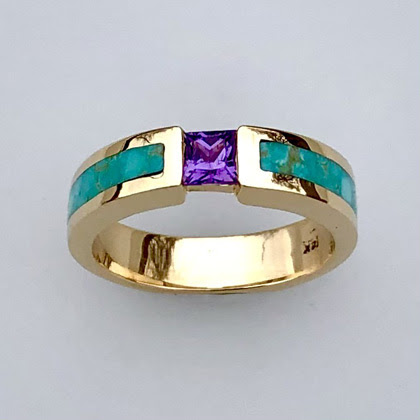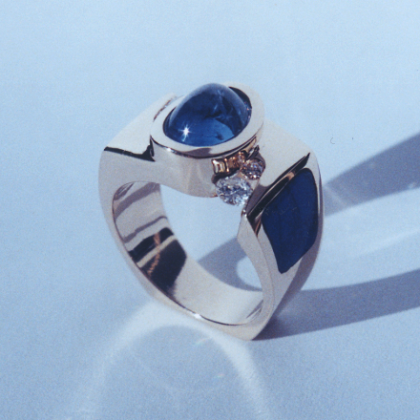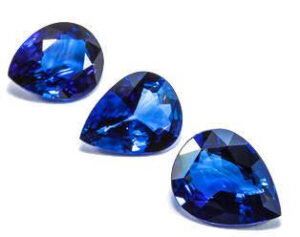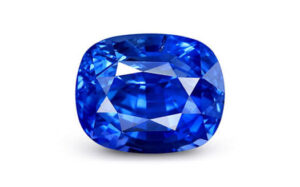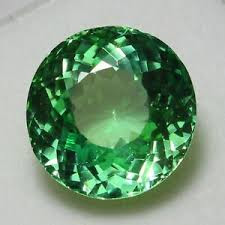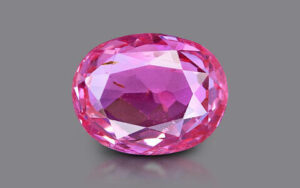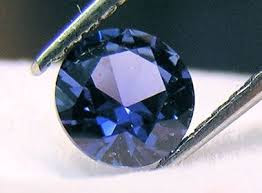Sapphires are valuable gemstones made up of aluminum oxide with small amounts of other elements like chromium, titanium, magnesium, iron, and vanadium. Natural "luxurious" sapphires come in a variety of colors, including green, purple, yellow, and orange; “parti” sapphires have more than two colors. Red corundum gemstones are also found, however, these are referred to as rubies rather than sapphires. Based on the location, pink-colored corundum is categorized as either sapphire or ruby. Natural sapphires are often polished and cut into gems, which are then used in jewelry. Large crystal boules can also be made artificially in labs for commercial or ornamental uses.
Sapphire is utilized in a wide variety of non-ornamental application areas, like high-durability windows, movement bearings, infrared optical systems, wristwatch crystals, and very tiny electronic wafers that are utilized as insulating coatings of special-purity semiconductors, due to its exceptional hardness. Sapphire is on the Mohs scale of 9, which is the third strongest mineral, and the top two gemstones are diamond at a scale of 10 and moissanite at a scale of 9.5.
September's birthstone is sapphire, which is also the gemstone of the 45th anniversary. There are always sapphire anniversaries after about 65 years.
Natural Sapphire
Most deposits of sapphire are found in Afghanistan, Laos, Rwanda, Cameroon, Thailand, China, Nigeria, Mozambique, Sri Lanka, Ethiopia, Vietnam, India, Australia, Madagascar, Colombia, United States, Malawi, Cambodia, Kenya, Tanzania, and Myanmar.
Both sapphire and ruby are the two gem varieties of corundum. Sapphire is an uncut, coarse yellow sapphire located at the Spokane Mine near Montana. Even though blue is the most well-known color of sapphire, it can also become in form of a colorless color or even come in various colors such as black or gray. Padparadscha sapphire is a type of sapphire that has a pinkish-orange color. Rubies and sapphires are frequently discovered in the same geographical areas, however, their geological formations are obviously different. In the Mogok Stone Tract of Myanmar, for instance, both sapphire and ruby are found, although rubies are formed in marble while sapphire originates from corundum syenites. The mining of sapphire produces a wide variety of quality, and the source of the sapphire does not ensure its quality. Kashmir sapphire commands the highest price, while Sri Lanka, Burma, and Madagascar also produce substantial numbers of high-quality sapphires.
Natural sapphires are priced differently based on size, clarity, cut, color, and general performance. Sapphires that have not been processed are significantly more valuable than those that have been. The origin of a product has a significant impact on its pricing.
Buyers frequently seek an independent analysis from a reputable laboratory such as GIA, SSEF, or Lotus Gemology for most diamonds weighing at least one carat before making a purchase.
Alluvial deposits and major underground workings are used to mine sapphires. The following nations have industrial ruby and sapphire mining operations: Australia, Myanmar, Cambodia, Afghanistan, Sri Lanka, Colombia, Tajikistan, Nigeria, Thailand, India, the United States, China, Laos, Madagascar, Kenya, Nepal, Pakistan, Malawi, Tanzania, and Vietnam.
Sapphires from different parts of the world may have distinct looks or chemical levels of an impurity, as well as different forms of tiny inclusions. As a result, sapphires are classified into three types: classic metamorphic, classic magmatic, and non-clastic metamorphic.
Some sapphires, especially classic metamorphic sapphires from Sri Lanka, Burma, and Kashmir have not been heat-treated, maybe more economically attractive than others.
Sri Lankan mines produce the Logan sapphire, the Star of India, the Star of Adam, and the Star of Bombay.
As of 2007, Madagascar is the leading country in sapphire production, with reserves in and around the city of Ilakaka. Before the Ilakaka mines, Australia was the world's leading sapphire manufacturer.
A new source of sapphire was identified in Madagascar in 1991. The specific area was first mined for sapphires in 1993, but it was basically abandoned after a few years due to the difficulty of extracting sapphires from bedrock. Sapphires have been mined primarily in Montana, including those along the Missouri River in Montana, Dry Cottonwood Creek, Helena, and Rock Creek. Yogo Gulch, west of Lewistown, Montana, is home to fine blue Yogo sapphires. In the Franklin, North Carolina area, a few gem-quality rubies and sapphires have also been discovered.
The Kashmir sapphire resources are well-known in the gemstone business, despite the fact that their optimum output occurred in a very short time around the end of the nineteenth and beginning of the twentieth centuries. They have a fantastic brilliant blue tone, as well as a strange, almost sleeping aspect that some gem experts refer to as "blue velvet."
The value of a sapphire is significantly influenced by its origin, and most corundum from Kashmir may be distinguished by its typical smooth surface and outstanding hue.
Unlike non-Kashmir sapphires, which might appear purple or yellowish in juxtaposition, the particular blue appears shiny in any light.
In Conclusion
Sapphires are said to represent luck, virtue, and sanctity for the royals, according to several sources. A sapphire also symbolizes fidelity and sincerity in a wedding ring. Some years ago, it was thought that the reflections of sapphire contributed
to the sky's blue color. The most common color of sapphire is dark blue, although all colors are now evenly popular, and white sapphires have replaced white diamonds as a popular choice. Sapphires are unique and brilliant gemstones that have long been prized for their vibrant color and longevity.
